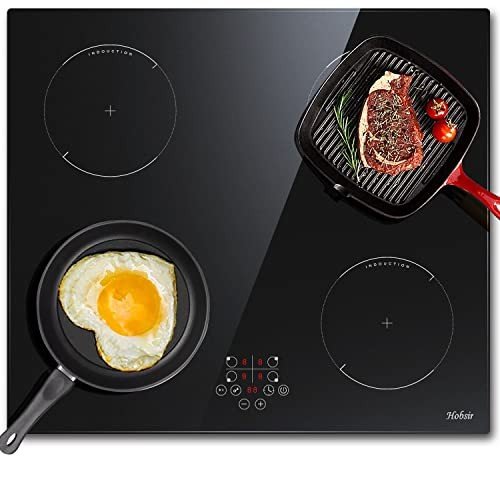An In-Depth Guide to Ovens and Hobs: Choosing the Right Appliances for Your Kitchen
When it concerns outfitting a kitchen, ovens and hobs are significant players. These devices not just dictate the effectiveness of cooking procedures but likewise contribute to the total aesthetic and functionality of the kitchen environment. This article will check out the various kinds of ovens and hobs, their features, and considerations to remember when purchasing, together with useful FAQs to assist readers gain a much deeper understanding of these important kitchen appliances.
Understanding Ovens
Ovens are created to cook food utilizing heated air. They are available in numerous types, each with distinct performances.
Kinds of Ovens
- Standard Ovens: These are the most common types. They use a heating aspect at the bottom, which heats the air inside the oven.
- Convection Ovens: Equipped with a fan and exhaust system, convection ovens flow hot air uniformly around the food, leading to quicker and more even cooking.
- Microwave Ovens: These utilize electromagnetic waves to heat food. They are perfect for reheating and cooking food in minutes.
- Steam Ovens: These use steam for cooking, which helps keep moisture in foods and maintain nutrients.
- Wall Ovens: Built into kitchen walls, these ovens save area and typically come geared up with advanced features.
- Double Ovens: These include two different oven compartments, permitting multiple dishes to be prepared at the same time at different temperatures.
Key Features to Consider in Ovens
When picking an oven, consumers must consider the following functions:
- Size: Ensure that the oven fits into your kitchen area while accommodating your cooking needs.
- Oven Capacity: Depending on family size and cooking routines, bigger capacities may be essential.
- Temperature Range: A larger variety enables versatile cooking techniques.
- Energy Efficiency: Look for energy-efficient models to minimize utility costs.
- Smart Technology: Many modern ovens provide Wi-Fi connection and programmable features for benefit.
Checking out Hobs
Hobs, or cooktops, are vital for stovetop cooking. They can be different based upon their heating methods and features.
Types of Hobs
- Gas Hobs: These use gas flames for cooking and provide immediate heat, making it easier to manage temperatures.
- Electric Hobs: These make use of electric coils or a glass-ceramic surface area for cooking. They are often easier to clean up and preserve.
- Induction Hobs: Using electromagnetic fields, induction hobs heat up only when compatible cookware is positioned on them, making them energy-efficient and much safer.
- Dual-Fuel Hobs: Combining gas and electric elements, dual-fuel hobs provide the best of both cooking methods.
Key Features to Consider in Hobs
When purchasing a hob, think about these functions:
- Number of Burners: Depending on cooking requirements, customers may choose hobs with several burners.
- Size: Ensure it fits well with your readily available kitchen counter area.
- Safety Features: Look for automatic shut-off and child lock features for added security.
- Relieve of Cleaning: Smooth surfaces tend to be much easier to clean than standard coils.
Ovens and Hobs Comparison Table
| Feature | Oven Type | Hob Type |
|---|---|---|
| Cooking Method | Baking, Roasting, and so on. | Boiling, Frying, etc. |
| Preheat Time | Differs | Instant for Gas |
| Temperature level Control | Thermostat | Manual/Knob |
| Energy Efficiency | Energy ranking varies | Depends on type |
| Cleaning Flexibility | Self-cleaning alternatives | Smooth vs. Coiled |
| Smart Features | Wi-Fi, App control | Restricted functions |
Often Asked Questions (FAQs)
1. What is Fan Oven Sales in between a traditional oven and a convection oven?
Traditional ovens count on heating elements, while stove utilize a fan to circulate hot air for more even cooking.
2. Are induction hobs safe for households?
Yes, induction hobs are considered much safer as they only warm up when pots and pans is placed on them and cool down quickly once eliminated.
3. How do I clean my oven effectively?
Self-cleaning functions can streamline this process, however for manual cleaning, use a baking soda and vinegar paste to assist get rid of tough stains.
4. Is it worth buying a double oven?
For those who often prepare big meals or take pleasure in baking multiple meals simultaneously, a double oven can be extremely helpful.
5. What size hob should I purchase?
This largely depends upon your cooking requirements and available counter area. Common sizes include 60cm and 90cm hobs.
Selecting the best oven and hob is crucial for any kitchen. Each type includes its distinct functions matched for numerous cooking needs and designs. Understanding the distinctions in between ovens and hobs, in addition to their particular performances, can help consumers make notified decisions. As innovation advances, more options are available that integrate performance and use, ensuring that cooking remains a satisfying and effective part of everyday life. In picking home appliances that best fit your cooking design, you can transform your kitchen into a hub of culinary creativity.

